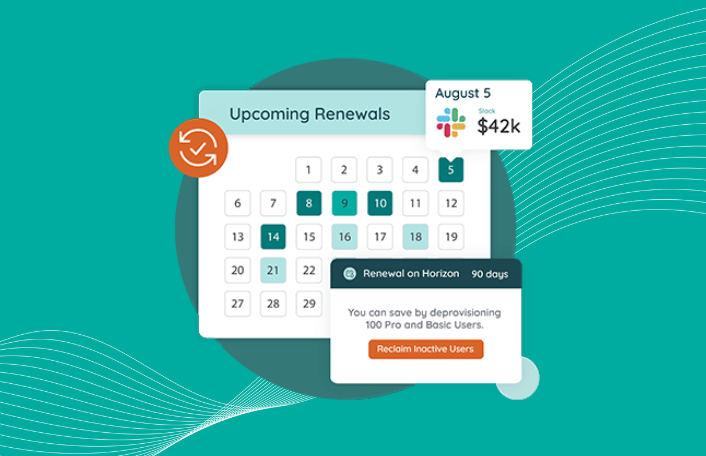
Prioritize Renewals by Business Impact with a SaaS Renewal Calendar
Table of Contents ToggleSaaS Presents Unique Challenges to IT Procurement ProfessionalsWhy...
Back
Back
Search for Keywords...
Blog

Table of Contents
In the past, all software spending at an organization was funneled through IT procurement or sourcing. And software sourcing typically involved a formal RFP and often, a lengthy decision-making process. But, those days are long gone, thanks, in large part, to the rapid shift to software-as-a-service (SaaS) and other cloud-based delivery models. The future is now SaaS Management for procurement teams.
Though SaaS is a relatively new business model, it’s one that’s quickly gained traction. According to Crunchbase data, there are more than 15,000 SaaS companies in the world. What’s more, in 2020, SaaS spending grew 14% among Zylo customers, while application quantity grew by 9% – despite budget cuts at many organizations.
Of course, the right SaaS tools play an important role in boosting the efficiency of your employees – and your entire organization. In fact, as a procurement professional, you yourself probably depend on a number of SaaS tools to do your job well.
But SaaS has also caused a big shift in software sourcing – and the way procurement professionals do their jobs. And in many ways, it’s made things a whole lot more challenging.
There are myriad good reasons companies are making the switch to SaaS: lower cost, simple implementation, and enhanced security – just to name a few.
But there’s no denying that SaaS can also cause some pretty big headaches for procurement professionals.
SaaS has never been easier to acquire; it typically often only requires a credit card number and small amount of contact info. And because it’s so easy, business units and individuals often purchase their own applications – without the involvement of IT procurement.
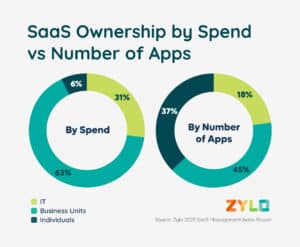
Zylo has found that at an average organization, business units and individuals are responsible for two-thirds of all SaaS spending – and 82% of SaaS inventory. What’s more, one in six employees has acquired a SaaS application via expense.
When SaaS is purchased by teams and organizations throughout the company, procurement leaders have very little visibility into an organization’s overall application spend and usage. SaaS growth goes unmanaged, and that leads to uncontrolled costs and risk.
And that’s a big problem for procurement professionals.
A key responsibility of every procurement team is to identify cost savings opportunities. But that’s difficult (if not impossible) to do when you’re not sure what applications are in use at your organization.
The unfortunate truth is that you’re probably paying for unused (or underused) SaaS applications. And because so many employees are purchasing SaaS applications via expense reimbursement, chances are also good that your organization is paying for tools with redundant functionality. You might even be paying for the exact same application multiple times!
Procurement’s lack of visibility into SaaS spending and use is especially problematic when it comes to renewals – which are a frequent occurrence at most organizations. Zylo research found that large organizations experience an average of one SaaS application renewals each business day.
If you don’t know what applications have been purchased by your organization, it’s virtually impossible to anticipate renewals. That means you’ve probably found yourself scrambling to meet an unexpected contract renewal more times than you care to admit.
The thing is, without adequate time to prepare for these renewals, decisions are often made reactively. So it’s likely you’re renewing applications you shouldn’t be – or not negotiating as much as you could be.
2022 SaaS Management Index
Learn MoreIf this all sounds familiar, you’re certainly not alone. The rise in SaaS brings with it a host of frustrations for nearly all procurement professionals.
But SaaS is here to stay. So procurement leaders must adapt their approach to SaaS.
The good news? SaaS management can make the lives of procurement leaders a whole lot easier.
A growing number of procurement professionals are developing SaaS management strategies for their organizations. But what exactly is SaaS management?
Simply stated, SaaS management is the practice of proactively monitoring and managing the entire lifecycle of SaaS applications within a company’s technology portfolio, including:
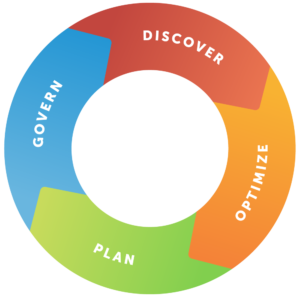
Organizations that practice SaaS management are able to ensure their teams have the tools they need to be effective – while reducing the unnecessary costs and risk of SaaS growth.
The foundation of effective SaaS management is full visibility into all of the applications your organizations use. After all, you can’t manage something if you don’t even know it exists!
However, SaaS management gives you a clear picture of how much is being spent on SaaS, who’s doing the spending, and how much value each investment is bringing to the organization.
Typically, organizations that practice SaaS management keep all key contract or agreement details for all SaaS applications in a single system of record. That way, Procurement, IT, and line of business owners are all using the same, single source of truth when it comes time to make a decision.
Gaining full visibility into SaaS purchases means you’re better positioned to:
When you have a clear picture of all SaaS applications in use, it’s a lot easier to identify opportunities for your organization to cut costs and risk. And there are a number of effective ways to do that.
For example, once you’ve discovered all SaaS purchased by your organization, you might determine you’ve got duplicate instances of the exact same application. You can use these insights to combine those duplicates into a single purchase – and negotiate better rates or terms.
Or, you might determine you’ve got a dozen project management applications in use throughout the organization. There’s an opportunity here to consolidate, keeping only the tools that deliver the most value to your organization.
In order to make informed renewal decisions, you’ve got to know when they’re coming. That’s easier to do when you practice SaaS management – and have all key dates and details documented for each application purchase.
You can even put together a SaaS renewal calendar so you aren’t caught off guard. You’ll get an alert when a renewal is coming up. And that way, you’ll have enough time to pull all of the information you need (and collaborate with the application purchaser) to make informed renewal decisions.
Leading organizations are adopting SaaS management because they understand it’s a powerful, proven way to cut unnecessary costs and risk.
But today, the average organization maintains 291 applications. If you spent your time manually managing each of these applications, you wouldn’t have time for more strategic initiatives.
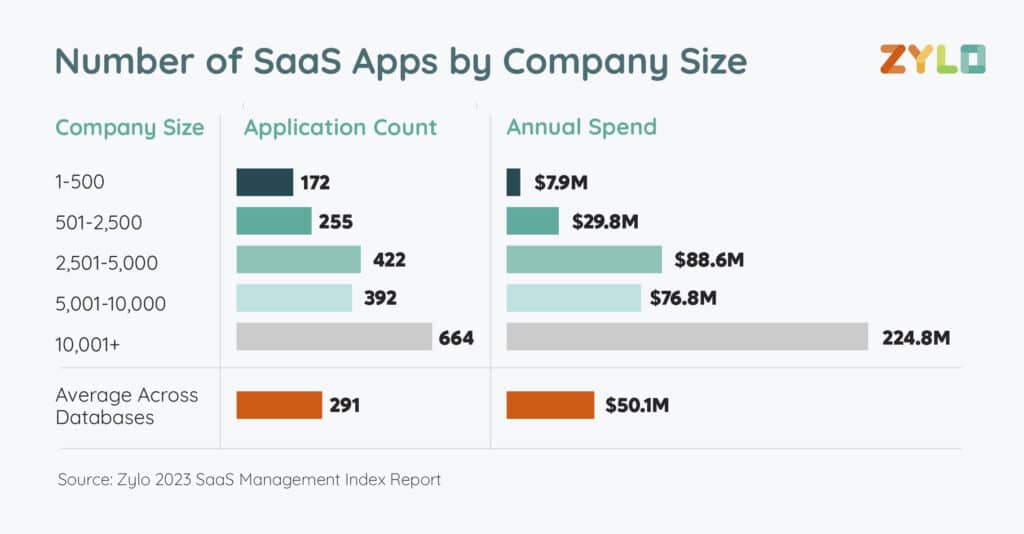
What’s more, spreadsheet-driven record keeping leaves a lot of room for error – and quickly becomes outdated. After all, new applications enter and leave active use regularly.
Instead, consider partnering with a SaaS discovery and management provider like Zylo.
Working with Zylo is proven to ease the burden of SaaS management and make it easier for you to control costs and risks – while still providing employees with access to the SaaS applications that make them effective.
To see how Zylo simplifies managing SaaS for procurement leaders, request a demo of the leading SaaS management platform today.

Table of Contents ToggleSaaS Presents Unique Challenges to IT Procurement ProfessionalsWhy...
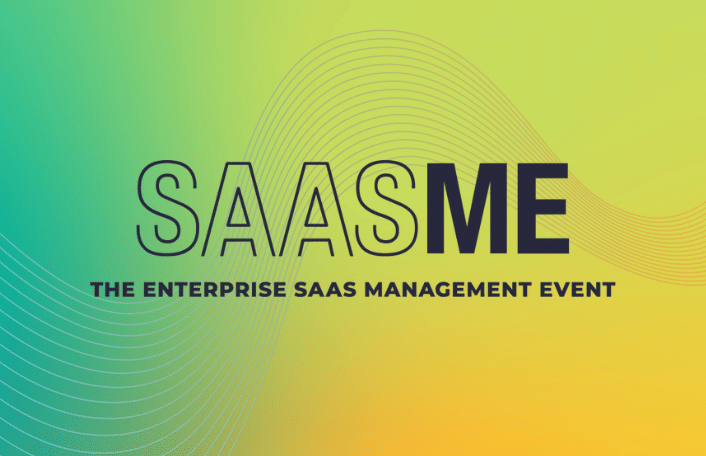
Table of Contents ToggleSaaSMe 2024 Takeaway #1: Change Your Mindset, Or...

Table of Contents ToggleWhy Usage Data Is Important Underutilized SaaS Rationalizing Overlapping AppsIdentify...
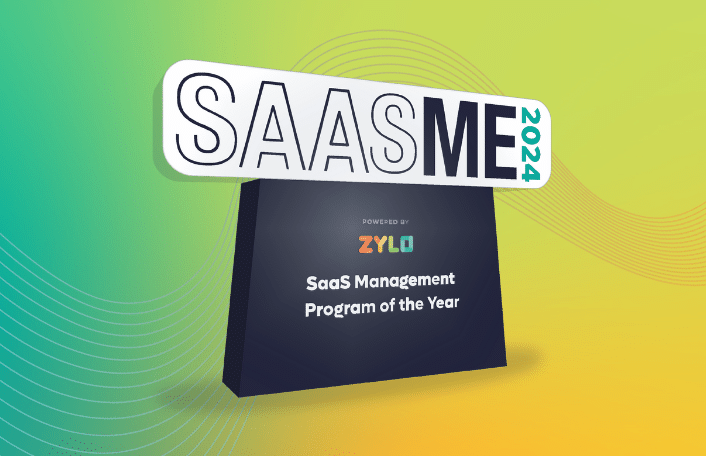
Table of Contents ToggleSaaS Management Program of the YearModernizing Medicine: Enterprise...
| Cookie | Duration | Description |
|---|---|---|
| cookielawinfo-checkbox-analytics | 11 months | This cookie is set by GDPR Cookie Consent plugin. The cookie is used to store the user consent for the cookies in the category "Analytics". |
| cookielawinfo-checkbox-functional | 11 months | The cookie is set by GDPR cookie consent to record the user consent for the cookies in the category "Functional". |
| cookielawinfo-checkbox-necessary | 11 months | This cookie is set by GDPR Cookie Consent plugin. The cookies is used to store the user consent for the cookies in the category "Necessary". |
| cookielawinfo-checkbox-others | 11 months | This cookie is set by GDPR Cookie Consent plugin. The cookie is used to store the user consent for the cookies in the category "Other. |
| cookielawinfo-checkbox-performance | 11 months | This cookie is set by GDPR Cookie Consent plugin. The cookie is used to store the user consent for the cookies in the category "Performance". |
| viewed_cookie_policy | 11 months | The cookie is set by the GDPR Cookie Consent plugin and is used to store whether or not user has consented to the use of cookies. It does not store any personal data. |
